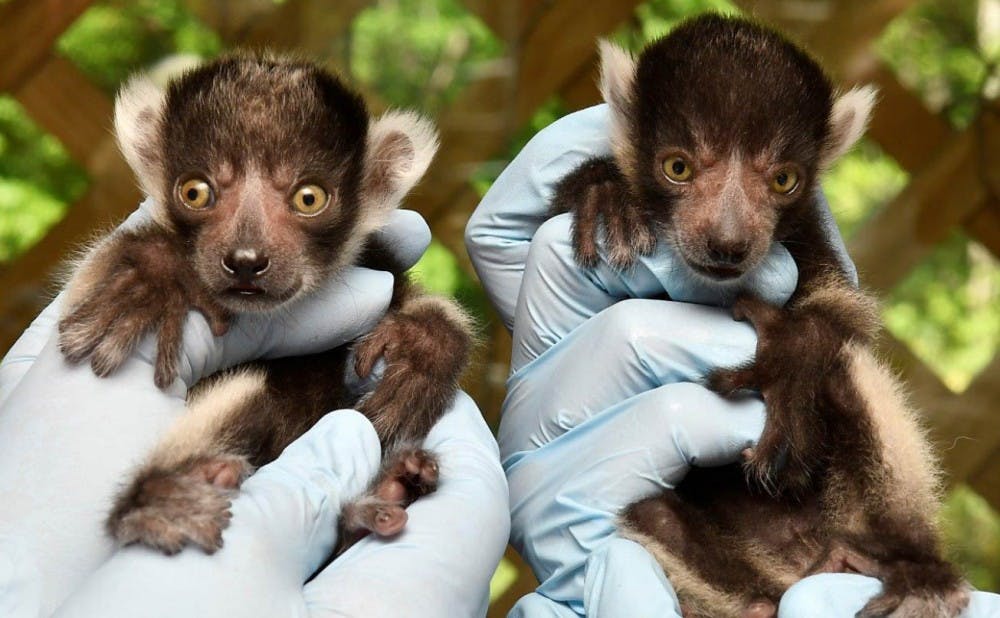What's better than a baby lemur? Twin baby lemurs.
The Duke Lemur Center welcomed two critically endangered black and white ruffed lemurs May 6, just a month after it began to nurture one of North America's 34 blue-eyed black lemurs. The twins—the smaller Harriot and larger Helene—are part of a species that scientists have determined to be at a very high risk of extinction and labeled "critically endangered" in the wild due to habitat degradation, according to a press release.
Harriot and Helene followed in the Lemur Center's tradition of naming white ruffed lemurs in extraterrestrial fashion—Harriot for astronomer Thomas Harriot, the first to use a telescope to view the moon, and Helene for a moon of Saturn.
The pair was born to mother Halley and father Ravo. They are the second set of twins for the pair.
While they might not look the part, black and white ruffed lemurs are pollinators—the rainforest-dwelling creatures transport pollen on their fur and pass it on to other trees. Oddly enough, in addition to pollinating like bees, black and white ruffed lemurs nest like birds. According to the Lemur Center's release, the pair's mother was nurturing the twins inside one of the special nests not long after they were born.
Mother black and white ruffed lemurs tend to leave their young in nests while they search for food, unlike other species of lemur that carry their young while foraging. They normally have litters of two to four offspring.
Get The Chronicle straight to your inbox
Signup for our weekly newsletter. Cancel at any time.

Managing Editor 2018-19, 2019-2020 Features & Investigations Editor
A member of the class of 2020 hailing from San Mateo, Calif., Ben is The Chronicle's Towerview Editor and Investigations Editor. Outside of the Chronicle, he is a public policy major working towards a journalism certificate, has interned at the Tampa Bay Times and NBC News and frequents Pitchforks.

